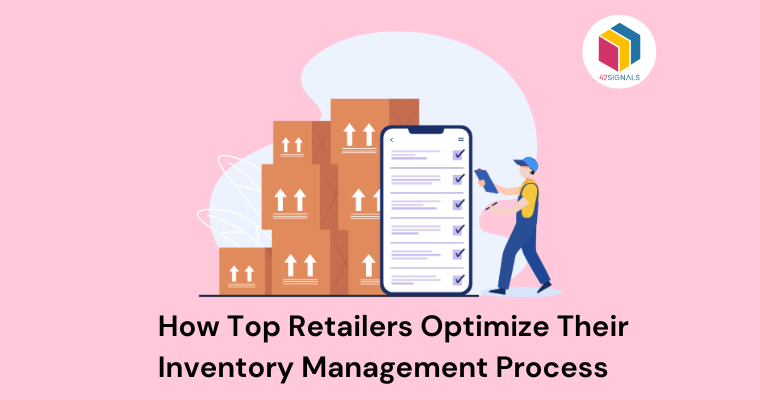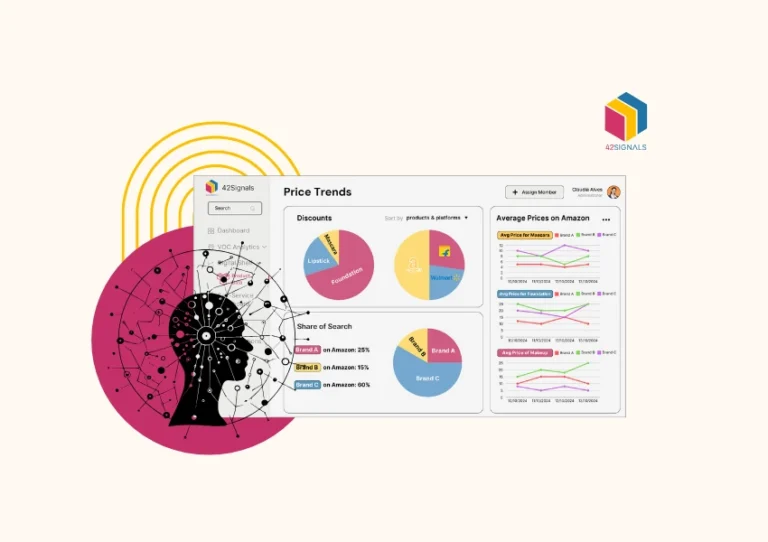Inventory management is a critical aspect of retail operations. Proper management ensures that the right products are available at the right time, minimizes excess stock, reduces costs, and improves customer satisfaction. Top retailers continually refine their inventory management processes through innovative techniques and technologies to stay ahead of changing customer demands.
To know how let’s explore the ways leading retailers optimize their inventory management processes, incorporating concepts like price discrimination, pricing experiments, odd pricing, and bundle pricing.
What is Inventory Management?
A good Inventory management process involves overseeing the flow of goods from manufacturers to warehouses and from these facilities to point of sale. Effective inventory management balances inventory costs with the need to meet customer demand. For top retailers, this balance is achieved through advanced strategies and technologies.
How Retailers Can Optimize Inventory Management Process?
1. Advanced Forecasting Techniques
Top retailers employ sophisticated forecasting methods to predict demand accurately. These methods use historical sales data, market trends, and seasonality to forecast future demand. Retailers also use machine learning algorithms to improve the accuracy of these predictions. By anticipating demand more accurately, retailers can maintain optimal inventory levels, reducing the risk of stockouts and overstock situations.
2. Real-Time Inventory Tracking
Real-time inventory tracking is crucial for an efficient inventory management process. Technologies such as RFID (Radio Frequency Identification) and IoT (Internet of Things) enable retailers to monitor inventory levels in real-time. These technologies provide precise data on the location and quantity of products, helping retailers to quickly respond to changes in demand and manage inventory more effectively.

Image Source: Rinf.Tech
We have a whole article here about the different pricing strategies if you are interested in knowing more about them.
3. Automated Replenishment Systems
Automated replenishment systems are another key tool in optimizing inventory management. These systems automatically reorder products when inventory levels fall below a certain threshold. By automating the replenishment process, retailers can ensure that they always have the right amount of stock on hand, reducing the risk of stockouts and minimizing excess inventory.
4. Price Optimization Techniques
Price optimization is an essential component of the inventory management process. By adjusting prices based on demand, retailers can influence sales velocity and manage inventory levels more effectively.

Image Source: Silicon Valley RG
Key techniques include:
• Price Discrimination
This involves charging different prices for the same product based on various factors such as customer segment, purchase location, or time of purchase. For instance, early-bird discounts or loyalty program discounts are forms of price discrimination that can help manage inventory by boosting sales during off-peak times.
• Pricing Experiments
Retailers conduct pricing experiments to understand how price changes affect demand. A/B testing different price points can reveal the optimal price for maximizing revenue while balancing inventory levels. This approach allows retailers to make data-driven decisions with pricing analytics.
• Odd Pricing
This is the practice of setting prices just below a round number, such as $9.99 instead of $10.00. Odd pricing can create the perception of a bargain, thereby increasing sales and helping to move inventory more quickly.
• Bundle Pricing
Offering multiple products for a single price (e.g., buy one, get one free, or product bundles) encourages customers to purchase more items. Bundle pricing can help clear out slower-moving inventory and increase the average transaction value.
5. Data-Driven Decision Making to Optimize Inventory Management Process
Leading retailers rely heavily on data analytics to make informed decisions about their inventory management processes. By analyzing sales data, customer behavior, and market trends, retailers can identify patterns and insights that inform their inventory strategies. This data-driven approach ensures that decisions are based on solid evidence rather than intuition.
6. Integration with Price Monitoring Software
Price monitoring software plays a significant role in modern inventory management. These tools, like 42Signals’s competitor pricing feature, monitor competitors’ prices and provide insights into market pricing trends.

By integrating this data into their pricing strategies, retailers can adjust their prices in real-time to remain competitive. This integration helps retailers to optimize their inventory levels by ensuring that their prices are aligned with market demand.
7. Supplier Relationship Management
Effective inventory management also involves strong relationships with suppliers. By working closely with suppliers, retailers can negotiate better terms, secure reliable supply chains, and improve lead times. Collaborative forecasting and shared inventory data can lead to more efficient restocking processes and reduced inventory holding costs.
8. Efficient Warehouse Management
Optimizing warehouse operations is another critical aspect of the inventory management process. Top retailers use warehouse management systems (WMS) to streamline their warehousing processes. These systems help to improve inventory accuracy, reduce order fulfillment times, and optimize warehouse space. Efficient warehouse management ensures that inventory is stored and retrieved in the most efficient manner possible.
9. Lean Inventory Practices
Lean inventory practices focus on minimizing waste and improving efficiency. Techniques such as Just-In-Time (JIT) inventory, where products are ordered and received only as they are needed, help to reduce inventory holding costs and minimize excess stock. Lean practices ensure that inventory levels are kept to a minimum without compromising customer satisfaction.
10. Customer-Centric Inventory Management Process Strategies
Top retailers adopt a customer-centric approach to inventory management. This involves understanding customer preferences and behavior to ensure that the right products are available when and where customers want them. Retailers can improve inventory turnover and enhance customer satisfaction by focusing on customer needs.
Conclusion
Optimizing inventory management is a complex but essential task for top retailers. Price optimization techniques, including price discrimination, pricing experiments, odd pricing, and bundle pricing, play a crucial role in managing inventory effectively.
Additionally, integrating with price-tracking software and maintaining strong supplier relationships further enhances inventory management processes.
If you are curious to know about how such a tool can help your brand manage inventory effectively and be ahead of your competition, schedule a demo with us. Our customized solution means that we fit our product to meet your needs.





